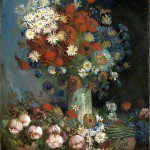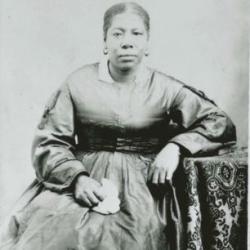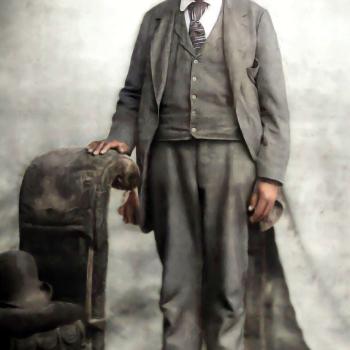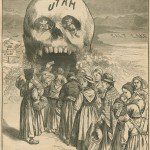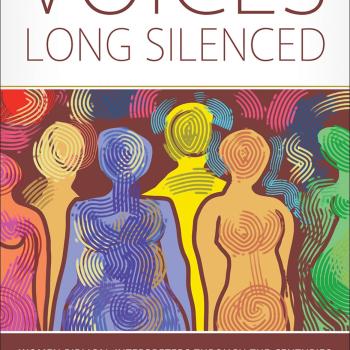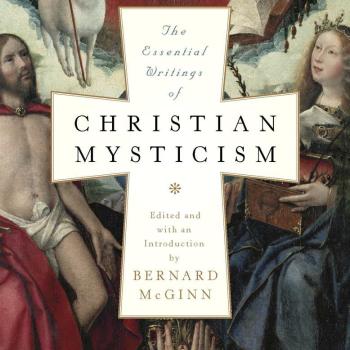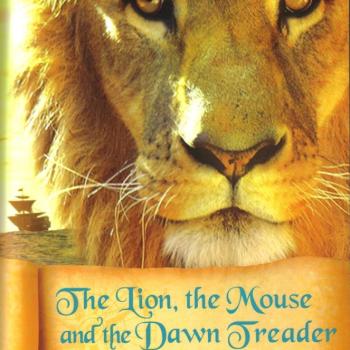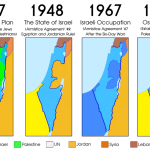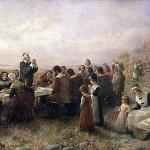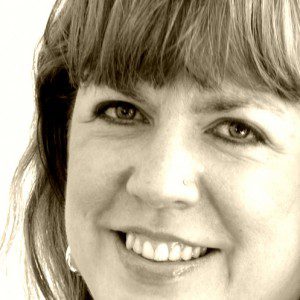
My friend and colleague Christine Valters Paintner has recently released a book called The Wisdom of the Body: A Contemplative Journey to Wholeness for Women. I think the question of how do we cultivate a more truly embodied spirituality — including an embodied contemplation — is very important for our time, so I think this book has the potential to be truly healing and affirming for many women.
The publisher sent me an advance copy and even though I’m not a woman, I still read it and enjoyed it. Like all of Christine’s books, it is basically a companion book for a retreat or a time of spiritual renewal, and encourages women to combine prayer with creative expression, yoga, dance, and journaling to foster and/or strengthen a loving and celebratory relationship with their bodies.
So recently Christine and I engaged in an email correspondence that yielded the following Q&A. It gives insight into her wisdom and gentle personality.
What’s the story behind the book? What inspired you to write it, and how is it different from your previous books?
This book is perhaps more personal than the others in that it originated in my own sense of struggle with body image issues as a child and young woman, and then navigating the further struggles of being diagnosed with an autoimmune illness. I knew I couldn’t be at war with my body and that the internalized self-judgment was unhealthy and destructive. It was my commitment to contemplation that opened up a new relationship and intimacy.
The book has some roots in work I did for my dissertation in Christian spirituality where I explored what it means to take the body’s vulnerability seriously in our spiritual practice. There is a social justice component to it for me as well – the more we learn to love our own bodies with all their limitations and abilities, the more we grow to accept the wide diversity of bodies in the world.
Early in the book you quote the Buddhist author Reginald Ray, who describes the body as “the last unexplored wilderness.” Why does this image resonate with you? How do you see engaging the body’s wisdom as like exploring a wilderness?
I am someone who loves images of exploring wild edges in the world, probably what drew me to live in Galway on the west coast of Ireland. The wilderness is that unexplored place which holds rich possibilities for our aliveness. It is where we discover a more expansive understanding of ourselves and God. I think the body offers us so much wisdom which we rarely slow down long enough to hear, and when we do listen we might discover some of those new edges and vibrant possibilities.
What did you learn from writing this book, and what surprised you in writing it?
I learned this is a lifelong journey to make, we don’t heal all the wounds our bodies carry in one go. We will continue to encounter our physical limitations in ways that call us to respond with more love and compassion.
I think I was most surprised by how long it took me to write this. My publisher could affirm this by revealing how twice I asked to switch my deadline with a different project to give me longer to complete it. It had been calling to me for years, but even though writing comes pretty naturally to me, I wanted to move very slowly with this material, to really honor the subject matter.
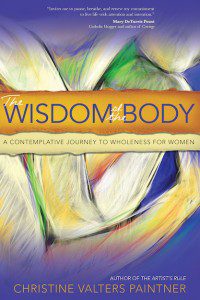
You are a Benedictine oblate and shaped by monastic teachings from desert and Celtic tradition. How do these traditions offer a healthy vision for the body?
The Benedictine tradition offers a great deal of wisdom about how to follow a balanced path where we don’t try to go to extremes in our spiritual practice. The sense that everything is holy, for me is the heart of the monastic path and so points to our bodies as sacred vessels as well. The Celtic tradition has such a body and earth honouring sensibility to it, and the desert monks taught me much about how to be with difficult thoughts and judgments as well as how to cultivate a capacity for presence to my experience as an expression of love.
In your book you suggest various yoga and movement practices. What would you say to someone for whom this is a frightening prospect?
I would say to begin slowly and gently. Yoga isn’t about matching your body to some idealized pose, but to find a shape that feels good in your body and you can rest into as a way to enter into some mindfulness about what you notice. It can begin with something as simple as slow, deep breaths. You can then slowly follow the rise and fall of the breath into gentle movement. The pose I offer in the first chapter is called resting pose because it is a place you can return to again and again as often as needed.
On the other hand, what advice or words of invitation do you have for someone who has a more competitive or sports-oriented relationship with their body: such as an athlete or someone who never misses a day at the gym?
My approach in this book is not about physical fitness, but about entering mindfully into the body’s wisdom. The practices ask that you set aside any competition and meet yourself exactly as you are in a given moment. It might be challenging to slow yourself down and tend to what your body wants to say, but you can bring this kind of loving mindfulness back to your sports exercises as well.
Your work has always connected the dots between spirituality and creativity, and in this book you continue to celebrate expressive art as a threshold to wisdom. Every chapter includes poetry from your friends, colleagues and students. Can you say a little bit about how you understand the expressive arts as helping us to engage the body’s wisdom?
Expressive arts engages a nonlinear and intuitive side of ourselves that is very much embodied. When we paint or write poetry or dance we aren’t so much thinking things through in a logical fashion, but accessing another kind of intelligence and wisdom. We become more attuned to felt sense rather than working just from thought or judgment. We learn to allow an inner thread to direct us rather than goals or striving which for me is an embodied wisdom of heart and gut, not just mind.
In a world so antagonistic to the body, what do contemplative practices have to offer us?
They offer us an alternative vision and way of seeing ourselves and others. We can begin to look more critically at the incessant advertising designed to make us feel inadequate so they can sell us something. We can rediscover the beauty and wholeness that is already ours so that we come home again to ourselves, learn to embrace our bodies for all the gifts they offer to us.
Finally, as a man I kept asking myself, “when is the men’s edition of this book coming out?” Do you think that’s something you would be interested in writing, perhaps in collaboration with your husband? How do you think a book on the wisdom of the body for men might be different?
I love that question. Certainly as I worked on the material I was aware that this is an issue that crosses gender lines. The work began with some online and live retreats which I limited to women so there was a sense of safety in sharing body issues that are specific to women. But I agree that men would benefit greatly from work like this. I do think it is something that would be better written by a man, perhaps my husband at some point (or perhaps you Carl!).
I think the language used would be different and the ways of exploring the body’s wisdom would need to be adapted to speak in ways that men would feel more comfortable with. Certainly finding some male mentors from the mystical tradition as well! Some of the practices in the book I think can certainly speak to both genders.
Christine Valters Paintner is the author of numerous books on cultivating a contemplative spiritual practice, including The Artist’s Rule: Nurturing Your Creative Soul With Monastic Wisdom and Eyes of the Heart: Photography as a Contemplative Christian Practice. Visit her online at www.abbeyofthearts.com.
Enjoy reading this blog?
Click here to become a patron.
Stay in touch! Connect with Carl McColman on Facebook:





